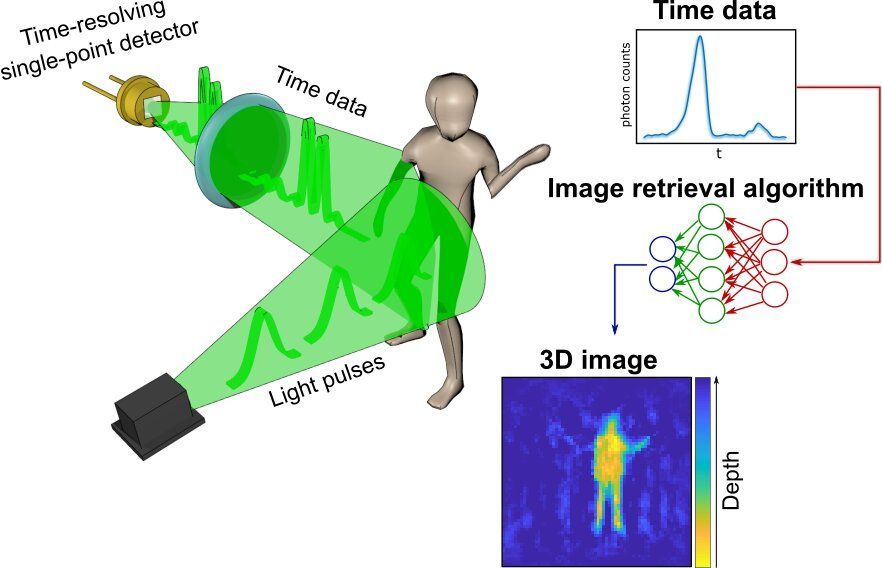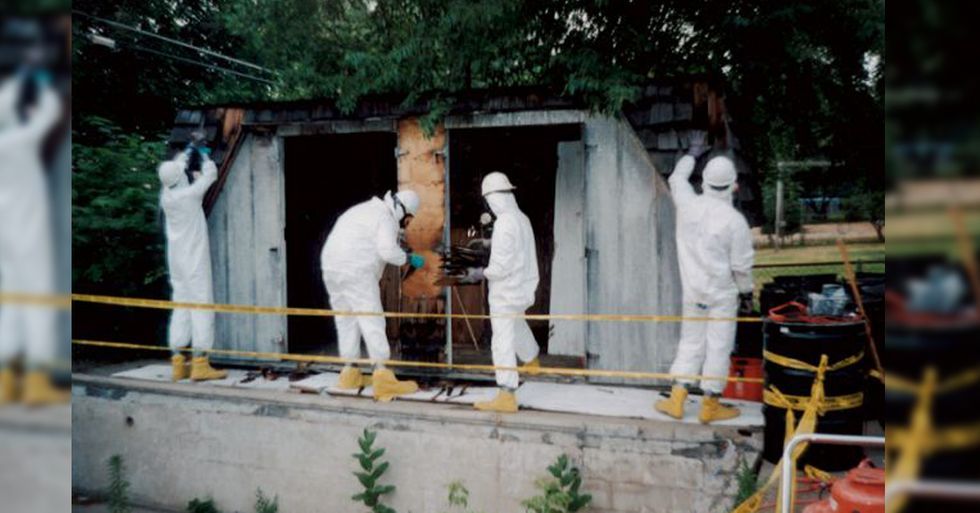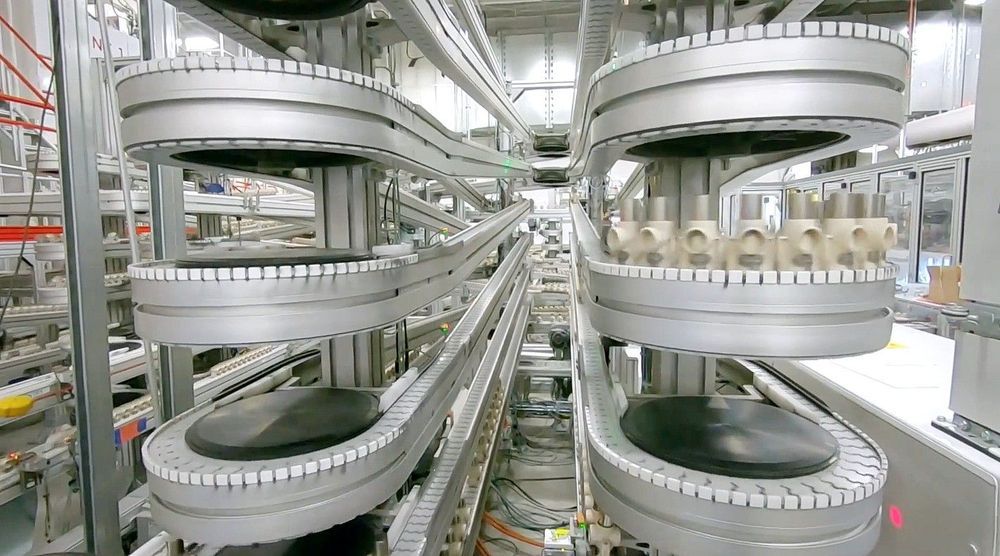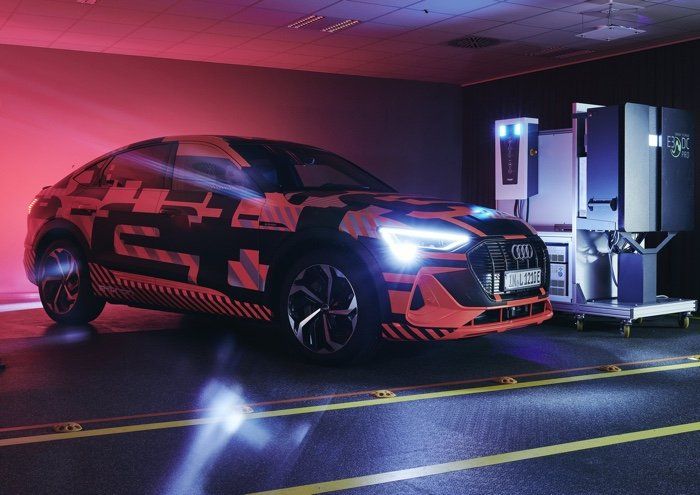Appy, France is being used to demo that electric cars work in remote areas.



A radical new method of imaging that harnesses artificial intelligence to turn time into visions of 3D space could help cars, mobile devices and health monitors develop 360-degree awareness.
Photos and videos are usually produced by capturing photons—the building blocks of light—with digital sensors. For instance, digital cameras consist of millions of pixels that form images by detecting the intensity and color of the light at every point of space. 3D images can then be generated either by positioning two or more cameras around the subject to photograph it from multiple angles, or by using streams of photons to scan the scene and reconstruct it in three dimensions. Either way, an image is only built by gathering spatial information of the scene.
In a new paper published today in the journal Optica, researchers based in the U.K., Italy and the Netherlands describe an entirely new way to make animated 3D images: by capturing temporal information about photons instead of their spatial coordinates.

The Honeywell UV Cabin System is a portable ultraviolet-c light (UVC) system that, when properly applied, reduces certain viruses and bacteria on airplane cabin surfaces.
This efficient and cost-effective system can cover an entire mid-sized airline cabin in less than 10 minutes. Roughly the size of a beverage cart, it can easily be transferred on and off the aircraft to maximize fleet efficiency. The extendable arms deliver treatments to both sides of an aisle at once, minimizing aircraft downtime between flights.

O,.o!
Imagine looking out your window to see an eerie green glow resonating from your neighbor’s shed. Or seeing government trucks being loaded with barrels marked radioactive by men dressed in hazmat suits outside your home.
The residents of Golf Manor, Michigan, don’t have to imagine it, because in 1995, a young teenage boy built a nuclear breeder reactor in his mother’s potting shed, an idea he came up with while working on his Atomic Energy merit badge in attempt to earn Eagle Scout status.

How true?
This video is about driverless cars and why China could be ahead of the world in self-driving car technology. We talk about how they are the biggest adopters of autonomous vehicles and how one day Chinese companies could be giving us a future of true autonomous travel. We also look at the issues that may set China back. Let’s take a look at why.
Subscribe for weekly videos on transhumanism tech:
I’m Alyse Sue and this is the Transhumanism Tech channel.
Connect with me:
Twitter: https://twitter.com/alysesue
Instagram: https://www.instagram.com/alysesue__
Facebook: https://www.facebook.com/alyse.sue1
LinkedIn: https://www.linkedin.com/in/alysesue
We partner with Transhuman Apparel. Buy a t-shirt to support: https://transhuman.deco-apparel.com
—————————————-


What do the loopy straws that children like to sip drinks through have in common with cutting-edge science? Ask Ryan Murphy and his colleagues at the National Institute of Standards and Technology (NIST), where the team has thought up a creative way to explore the properties of fluids under extreme conditions.
The team invented a device that can push fluids through a narrow tube at the velocity of a car hurtling down a rural interstate — about 110 km per hour. This might not sound overly fast to a road tripper, but the tube’s inner diameter is typically 100 micrometers — about the thickness of a human hair. Scaled up, that would be like a train hurtling through a subway tunnel about 100 times faster than a rocket blasting its way into orbit.
To add to the fun, the meter-long tube is coiled up like a spring, so the fluid careens around loop after three-centimeter-wide loop, as though that rocketing subway were a blindingly fast roller coaster that turns somersaults from start to finish.

During the second quarter earnings call, Elon Musk called on miners to efficiently mine more nickel. According to Musk, nickel miners could be assured of massive contracts with Tesla, provided that their mining practices are efficient and environmentally conscious. If recent reports are any indication, it appears that a Canadian mining company has recently answered the CEO’s call.
In a statement to Bloomberg, Toronto-based Canada Nickel Co. stated that it is poised to build a facility that has the capability to process zero carbon nickel. The need for such a product was highlighted by Canada Nickel Chief Executive Officer Mark Selby to the publication. “The electric vehicle chain and broader market in general is crying out for zero-carbon product,” he said.

Goodbye gas stations.
During the second quarter earnings call, Elon Musk tentatively confirmed that Tesla would be making a compact car and a vehicle with high capacity. Granted, it would probably take a few more years before such vehicles are produced, but one thing seems certain. Considering Tesla’s speed and pace, it would not be surprising if Tesla’s compact car and high capacity EV causes the extinction of the internal combustion engine.
Tesla’s current lineup of vehicles, which comprise the Model S, Model 3, Model X, and Model Y, are great EVs, but they are still fairly large for their class. This includes the Model 3 and the Model Y, Tesla’s “smaller” vehicles in its lineup. This, together with the vehicles’ premium price, end up blocking the company from reaching its full potential in the auto market. With a compact car and a high capacity vehicle, however, things could drastically change for Tesla.
Compact and High Capacity EVs
Tesla has mentioned the creation of a smaller car in the past, and more recently, the company has tapped into China’s creative minds for help in designing its compact car. This vehicle is expected to be designed and manufactured in China, but the opportunities for such a car go far beyond the country. Compact cars have a dedicated following, after all, and for good reason.

Interesting.
Audi has announced that it is testing out bidirectional charging technology for electric cars, this would incorporate the electric car into the domestic power grid and could provide additional power to the grid when not in use.
What this would do is make electric vehicles a storage unit for energy to be drawn on by the grid or the owners house when needed, for example when a vehicle was parked overnight or not in use.